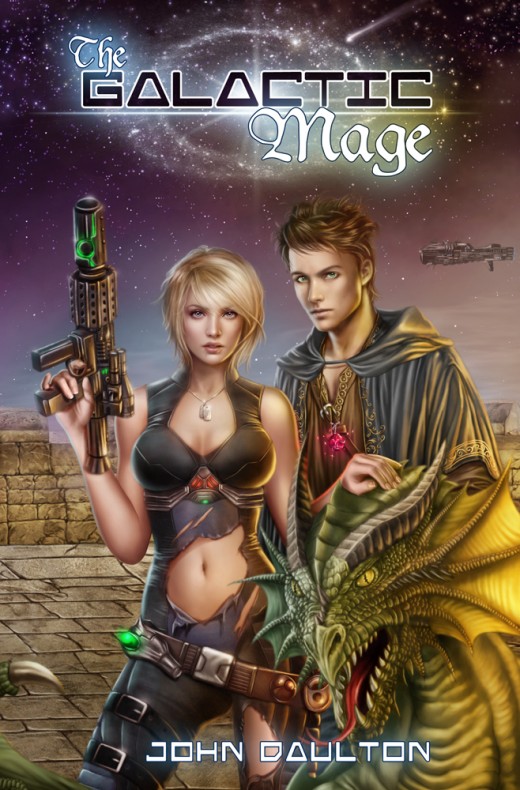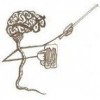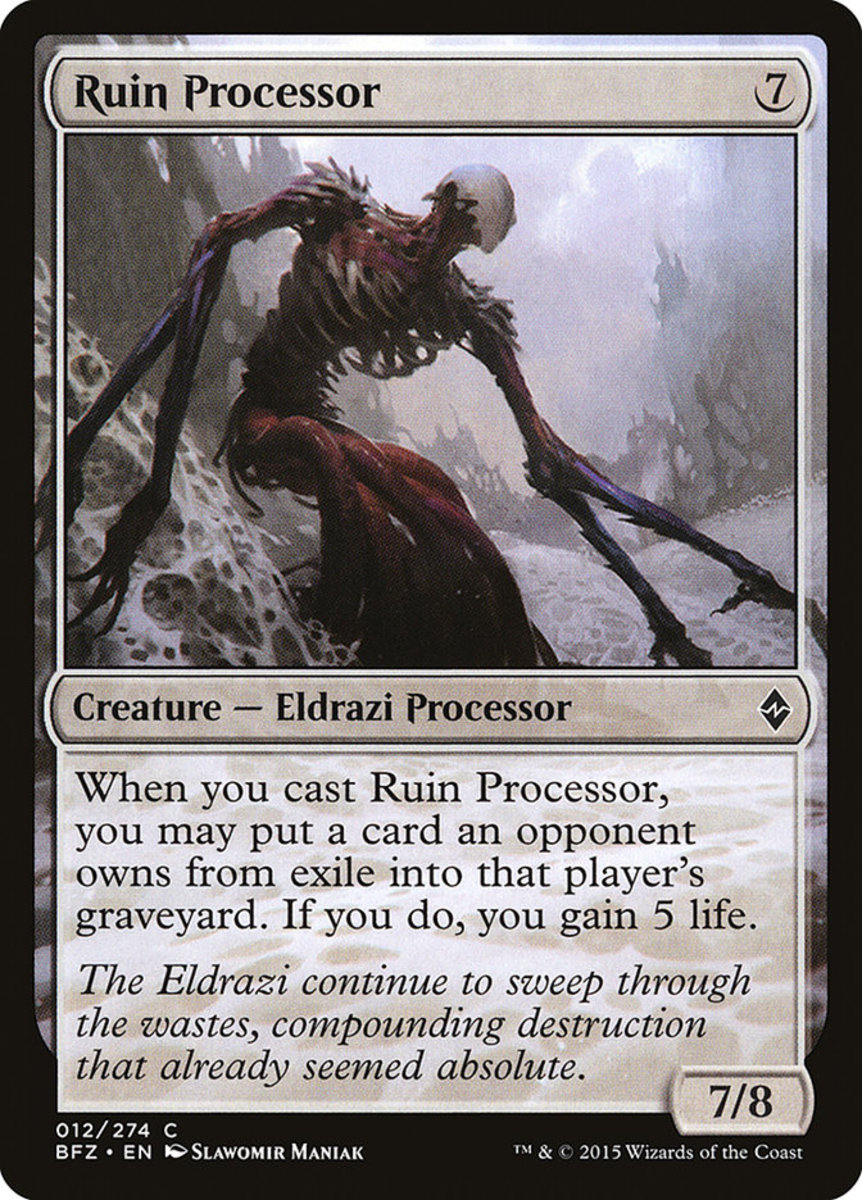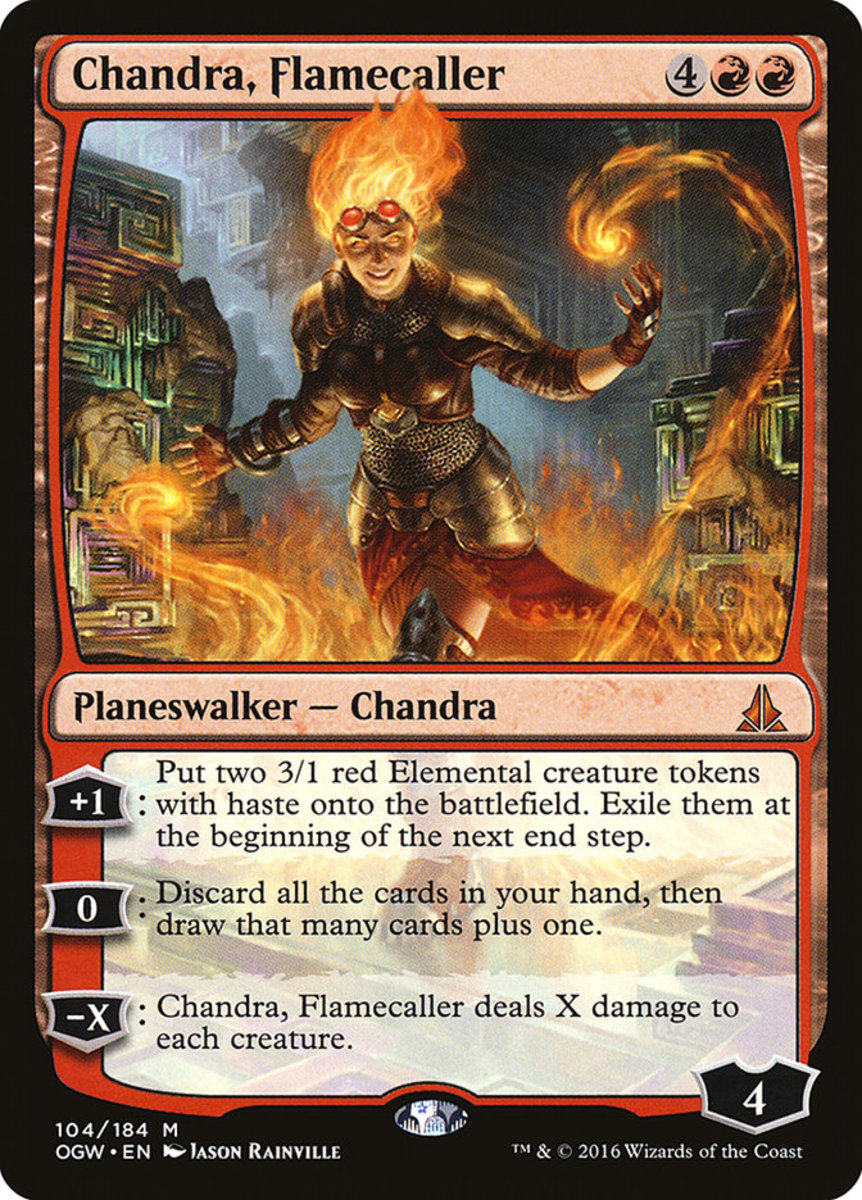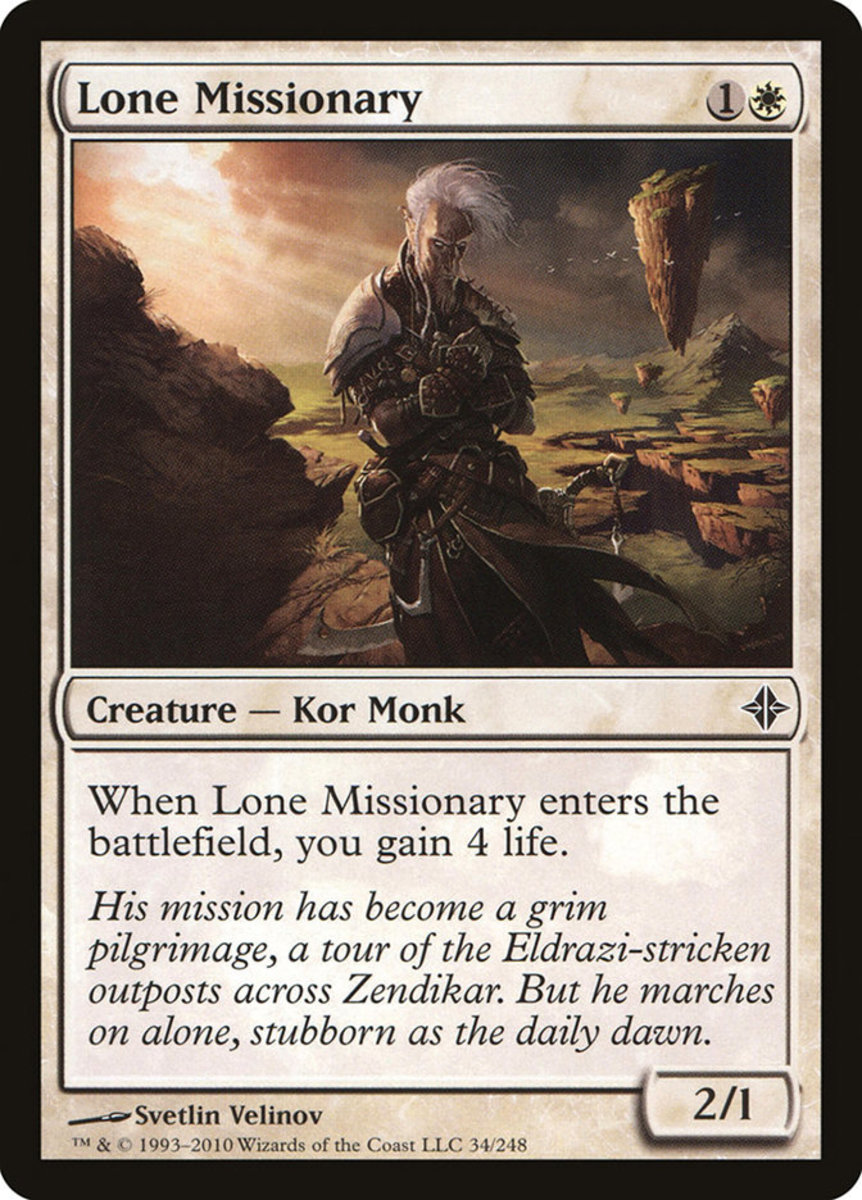- HubPages»
- Games, Toys, and Hobbies»
- Card Games»
- Collectible Card Games
Magic: The Gathering - a brief overview and a few tips
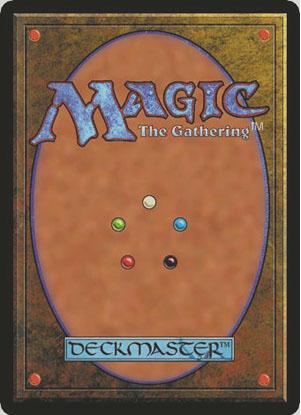
A Brief Overview
(The first two sections of this hub are a repeat of the close of THIS HUB. Feel free to jump down to “Getting Started” if you’re coming here from the other article.)
Magic is a card game that plays sort of like chess. You have “pieces” that you play, and your opponent(s) play counter “pieces” and you battle it out – except the pieces are cards. There are lots of different card types and an awesomely fun part of this game is building the deck that you play in any given round.
Each player starts out with a set amount of “life.” The object of the game is to play cards down onto the table, and then, use them like chess pieces, using each card’s special ability, it’s Magic, to go after the opposing “king” which is your opponent. Unlike chess, you can have as many opponents as you want and use as many, or as few, pieces as you want. You can make teams of two-on-two, or three-on-three… whatever you are in the mood to do.
Buying Tips
If you order online, buy two or three of the basic starter decks. If you want to have a little feel of the “Christmas morning gift-opening fun” buy a few booster packs too, but you don’t need them. Two starter decks and two or three booster packs is a nice way to begin.
If you go to a card shop (comic shops, baseball card shops, and video game shops often sell it: call first and ask), you will find “starter decks” and “booster packs.” Some shops will even have some decks already made up and ready to play. Ask the person behind the counter to help you get started, and don’t let them talk you into any fancy cards. You don’t need them. Yet. (Once you get addicted, well, … It’s ON! As they say.) You only need enough cards for you and a friend or two to play. Having super powerful cards changes absolutely nothing in the game experience, and my wife and I had just as much fun starting out fighting with badgers and long tusked boars as we do now fighting with twelve-headed hydras and dragons the size of Boeing jets.
Getting Started
Ok, so I said I’d help you get started. And I will. The first thing I will do is tell you the “game story” as I explain it to people I teach how to play. Bear with me here and just play along:
Imagine you and me and one other person are going to play. Think of yourself as a Wizard-King if you will (the game is called Magic after all), and so are me and the other person. We are rival kings. So, you are sitting across the table from me and someone else… we’re all “in our magical realms” as it were. The deck of cards that we each have is like our book of spells. It literally is by the way game works. Each card is a “spell” that you can cast to make something happen.
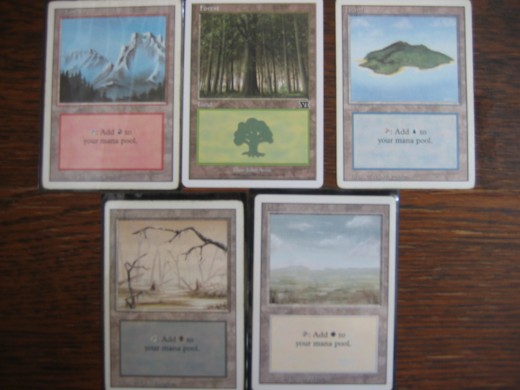
Mana
The mana cards (usually land cards) are the source of your magic. The game has five colors (red, green, blue, black, white) and each one has an association with particular geography and a corresponding fantasy theme. Blue is water, green is forest, white is plains/prairie, black is swampland, and red is mountainous terrain. You “the magician” draw your power from the earth, from your domain. One of the first things to try to do as you build your deck is to keep the number of different colors you put in your playing deck, your “spellbook,” down to a minimum. Personally I never do more than two colors. I will explain why later in the Building Decks section. Just trust me for now. The bottom line is that the mana cards (land cards) are where you generate the “magic energy” you need to cast the spells “written” in your “spellbook” that you are holding in your hand.
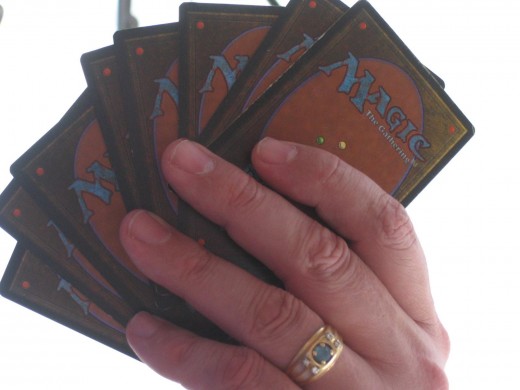
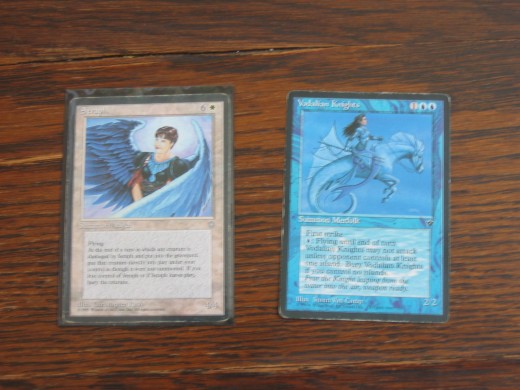
Monsters:
Think of Merlin summoning a monster to fight Morgane or something, some great magical battle. Merlin doesn't walk around with a horde of creatures following him everywhere, but he does carry his magic book. He would read from his spell book, then a monster would appear. So, there’s two things: 1) the page of the spell book, and 2) the actual monster that appears.
That is usually the first point of confusion to people starting out. When a card is in your hand, it is a spell, a page in your book. When you follow its instructions and do what it says you must to cast it, you get to put it on the table. Once it’s on the table, it becomes item 2) the actual monster. It is no longer a page in a book. On the table it is “real.” That is what you send across the lands to attack the other players.
Enchantments:
These work in the same way as the spells-turned-monster do. In your hand they are spells, written documents like a recipe. Once you pay the casting cost (using land cards) and put the enchantment card on the table, it becomes a “real” effect. Most of them are easy to understand, they’ll say “Enchant Creature” and will make one of your monsters stronger or something. You cast it and put it under the monster card and, that’s it. Some are a little more confusing. They just say “enchantment” and don’t have a target like a monster or a land card. Like say you had an enchantment card called “Fortress.” Its effect might be to make all your monster cards have a little more life. Once you “cast” it and put it down on the table, then the effect is in place for all of them. It’s just… happening now. It’s magic! OooOOOoo, scary! But very cool.
Instants and Interrupts
THIS is where the game goes from fun to fantastic. Every rule you are going to work so hard to understand when you start learning the game is totally subject to being ignored by the use of these wonderful cards. These cards undermine everything your enemies try to do, and they do it suddenly and without your opponent having any idea what was on the way. So much careful planning goes into an attack they launch at you and then, with the slightest flick of your wrist, you toss down an instant or interrupt card that essentially says, “Nice try, but go F--- yourself.” I’m sorry, but other games just don’t have enough of that kind of thing compared to Magic.
The Turn Phases
Ok, so when you first start reading the little instruction booklet that comes with your starter deck, you’re going to be like, “Dude, what’s up with the sequence of phases in my turn?” You’ll be tempted to ignore that part. Don’t. It’s not hard. Just do it. Again, trust me. As you start getting good at the game, you’ll begin to see that each phase has a purpose and that if the order of events is not consistent each time, for each player, the game doesn’t work. It’s like a dance. Both partners have to be dancing to the same song or, well, it’s just not going to be fun for anyone.
Building Your Starting Decks
Ok, I’m going to help you get some decks built so you can get a game. I’ll list them in ten simple steps. Don’t ask why, just do them. Once you start playing for a while, you’ll be able to see how a lot of what I’m giving you is just one way out of many, many ways to play. There’s so many ways that you would be overwhelmed if you tried to think of them all. So just do this to get your feet wet, and then you can come back in a month or six and tell me how much better your new idea is. I can’t wait to hear it!
Quick help:
- The land cards are easy to spot because they say "land" on them, and usually look like some sort of land mass/body.
- You can tell monster/creature cards from the others because they have a pair of numbers in the bottom right corner that look like fractions - 1/2 or 5/5 or 3/6
- You can tell "the rest" because they don't have numbers like that on them, and they are not a land card.
10 Steps to Your First Game
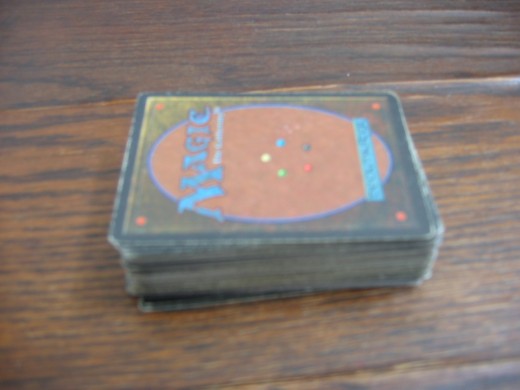
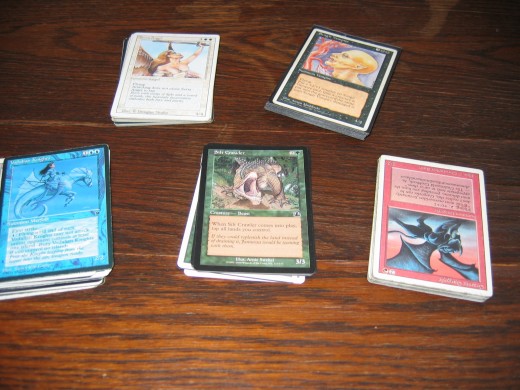
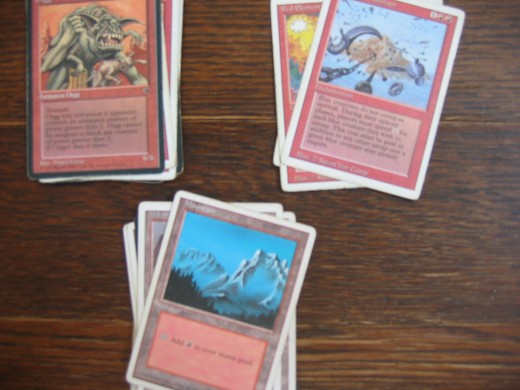
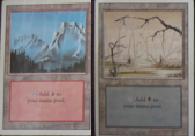
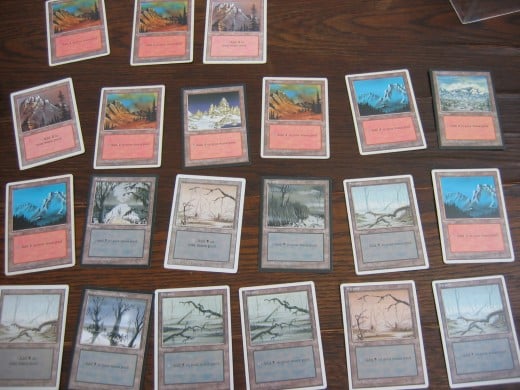
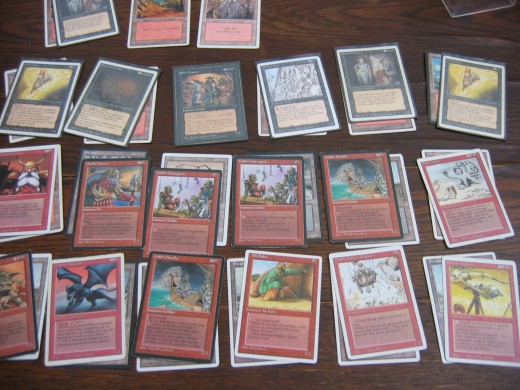
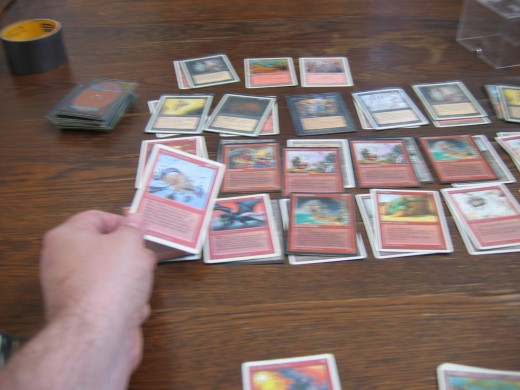
Congratulations, you have just made a deck.
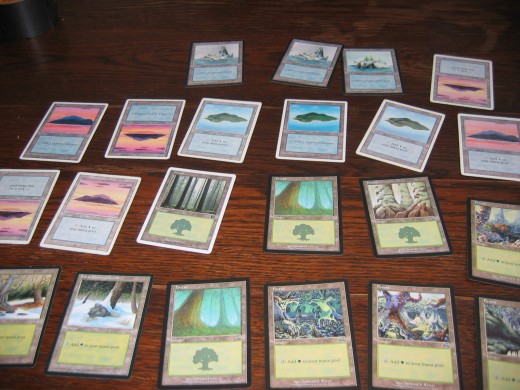
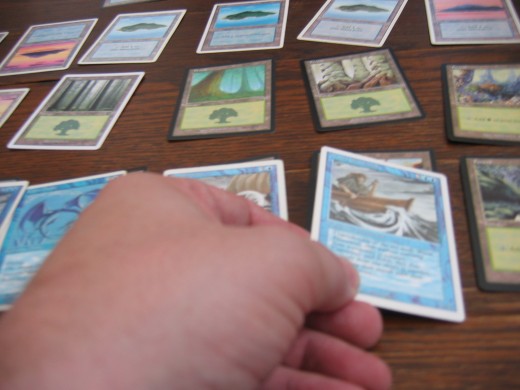
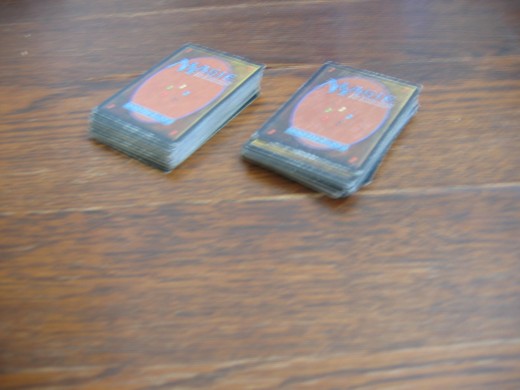
If you have lots of cards, you can make a third deck. The color count doesn’t have to be even, so if you have one deck that is almost totally green, say 40 cards green and only 12 black (or even all green), it doesn’t matter. My best deck of all time was all black. We play one color decks all the time. So, don’t get hung up on that.
The reason I said above that you only want two colors in your deck has to do with the fact that each spell card has a “casting cost” on the top right corner. It shows the icon of the land type required to “energize” that spell. So if you have a Bog Imp card, it requires the energy from ONE swamp land card. If you have all five colors in your deck, you might easily have that black creature in your hand, but not have a black land card to use to activate that spell. By having only two colors (or one!) then you will always have, or almost always have, the right combination of land cards and magic spells to get your army going and your opponent getting dead.
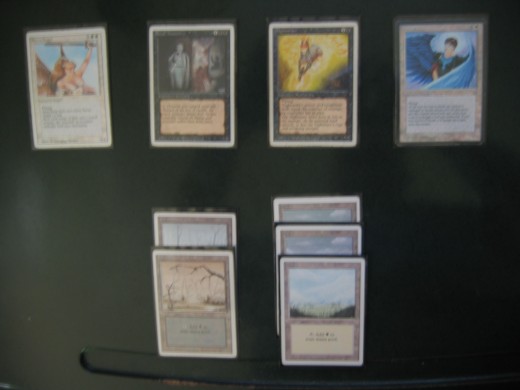
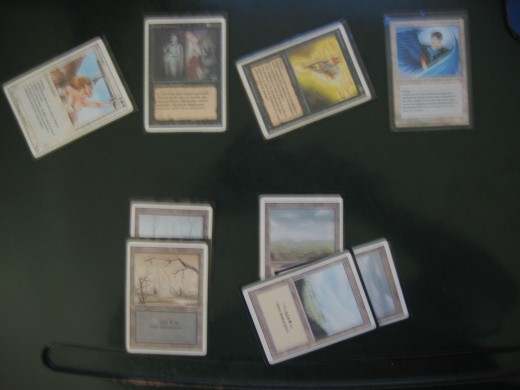
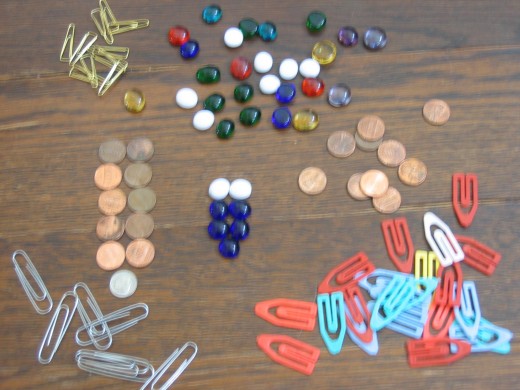
Game Play Tips
1. Tapping: Tapping mana, tapping creatures… you’re going to see that constantly on the cards. Tap this, tap that etc. It’s important to be able to tell what is “tapped” and what isn’t in this game, so tilt the cards very noticeably whenever a card is tapped. Trust me, it makes things very simple and helps avoid arguments. (lol, imagine five drunk guys trying to determine the outcome of a forty-two card exchange of combat cards and instants if it’s not clear which cards were activated and which were already spent?) (Not that I’m saying there were arguments, mind you, because obviously we are all mature and stuff, so would never have that happen. Ever. LoL. This game is so fun.)
2. Use pennies or beads or something to keep track of each player's life. It beats writing it down or using dice numbers etc., makes mistakes easier to catch, and allows all players to be on the up-and-up for all to see. Again, trust me.
3. Say the words, “My turn is now done; it is your turn.” Seems lame, but it’s not. Say it. Make it game policy. Like the phases of your turn, transitioning to the next turn is a particular moment in game time. There are things that can only happen “at the END of your turn.” If players don’t announce that they are “at the end of their turn” then other players don’t get the chance to do those unique things. Then they have to be all, “Hey, wait, go back, he didn’t say he was done. I was gonna do XYZ etc.” Just do it.
4. Remember that your monsters cannot attack their monsters. New players commonly want to send one of their big monsters to kill an opponent’s smaller monsters. That’s not how it works. Think of yourself as the general giving the orders for your army (even an army of one) to go attack. Your goal is to kill the enemy “king” remember? So you send your army into their lands to seek that other player out and take his life points. He or She is the king/general over there in his/her kingdom. So it will be him/her deciding how he or she defends against your attack. You don’t get to control that. Send your monsters in. Your opponent will be deciding what/how he or she deals with your attacking beasts.
Playing the Game
I am not going to explain the whole game, because you have a rule book that came with your cards that already explains it just fine. There are also websites already set up to get you started, so there’s no point in me reinventing the wheel.
I will say this: the game takes a few runs through to really get it down, but it’s well worth the time. Few “investments” into entertainment will ever pay so high in dividends as will this game.
Speaking of dividends, I promote this game as being an inexpensive source of fun. And it is. You will have hours and hours of fun with your starter decks. However, I will warn you, it gets in your blood, and, well, you might find yourself standing there at the card shop with the 13-year-olds muttering, "Dang, never thought this would be me." If that happens, well, it's not my fault. lol.
Feel free to leave questions if you have them about anything game related and I’ll do my best to help. I consider it a privilege to enable this kind of simple joy.
- Play Magic
Links to videos to help you get started and assorted stuff. - A Great Game for the Whole Family: A game you probably missed!
This is the original hub that spawned this follow-up. If you're not sure why you should want to play Magic, or think it's "not for you" but actually wish you had some fun new game in your life akin to Risk, or Monopoly, poker or chess... go read why. - Magic Online : Digital Games : Magic: The Gathering
Wizards of the Coast home. Lots of information, including access to the Online version. (Online still costs you money, you have to buy the cards still... just, you won't have them to take with you camping.) Real cards are way better in my opinion. - How To Play Magic The Gathering | How To Do Things.com
This guy makes the "chess" comparison too, so it's not just me.
Do you like to READ about magic and sorcery? Check out my new novel, The Galactic Mage:
